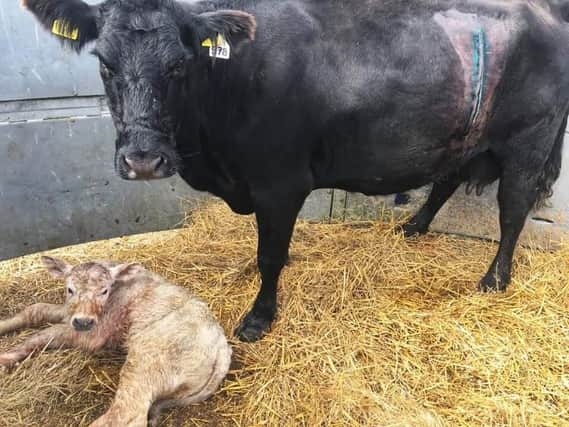FARMING: Calving can involve a caesarean section


Unfortunately the birth of any animal may be prone to problems and with so many animals due to give birth at one time, our team is kept busy dealing with any complications that may arise.
Calving difficulties can be due to several factors such as a calf being poorly positioned in the birth canal or a cow having a pelvis that is too small for the calf to pass through. Often the only way to try and save both the cow and the calf in these situations is to perform a caesarean section.
Advertisement
Hide AdAdvertisement
Hide AdMost of our farm clients will be well aware of what a caesarean section involves but if you have never seen one before then we thought we should explain what happens during one of our most common surgeries.
Many people that have never witnessed a caesarean are surprised to find out that the cow will remain standing for the entire operation and is fully conscious, unlike our small animal patients who will undergo a general anaesthetic.
This is one of the reasons that a caesarean section on a cow can be dangerous as without suitable equipment to restrain the cow she is able to move around mid-surgery and injure herself and those around her.
The first step of a caesarean is preparing the cow and the surgical area. A caesarean is performed on the left hand side of the cow so an area must be clipped and local anaesthetic applied so that the cow is unable to feel anything during the operation.
Advertisement
Hide AdAdvertisement
Hide AdPain relief, antibiotics and a drug to help relax the uterus are also given at this stage. The skin must then be scrubbed to ensure it is as clean as possible to reduce the chance of infection being introduced to the cow’s abdomen and is then incised, followed by the muscle layers and lastly the peritoneum, allowing access to the cow’s internal organs.
The next stage involves finding the cow’s uterus and getting hold of the calf to bring it as close to the incision as possible.
An incision is then made though the wall of the uterus over the calf’s foot which can then be held or roped.
This is where extra pairs of hands come in handy to pull the calf out while the surgeon extends the hole in the uterus so that it is big enough for the calf to be delivered. Usually the farmer is then responsible for resuscitating the calf who may sometimes need a bit of stimulating to start breathing while the vet focuses on stitching up the uterus and closing the incision.
Once the cow is closed up she can be reunited with her calf and it is important to make sure she accepts it and lets it suckle.